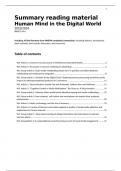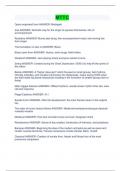Summary
The Human Mind in the Digital World: ALL READING MATERIAL SUMMARY
- Course
- Institution
The human mind in the digital world summary All the literature from HMiDW is completely summarized (including the group articles) Including abstract, introduction, short methods, short results, discussion, and conclusion. A lot of material but I've summarized every article. Will save you a l...
[Show more]




